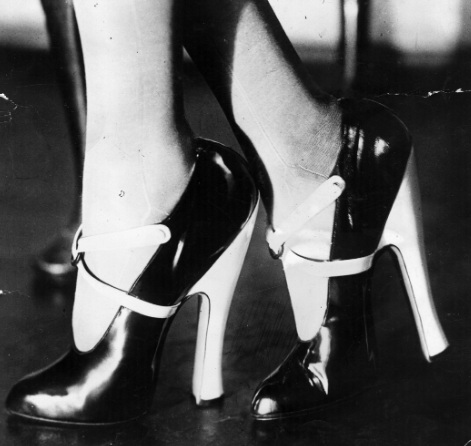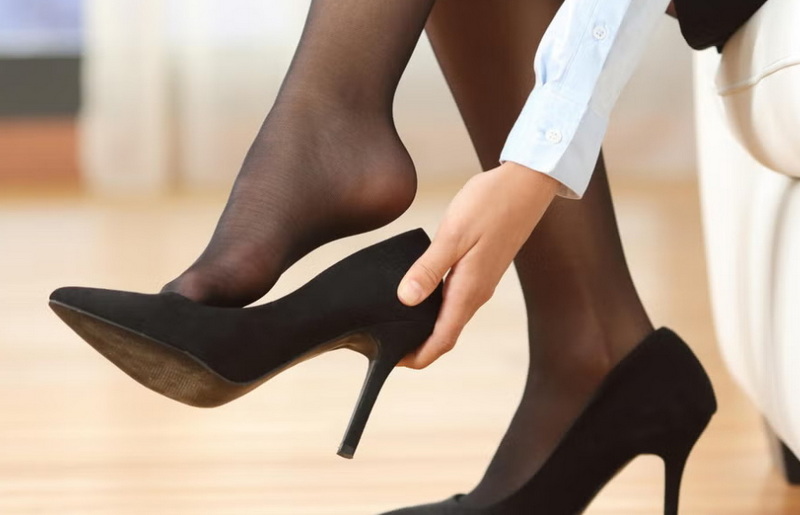Content Menu
● The Historical Perspective
● The Psychology of Height
● The Allure of Femininity and Sexuality
● The Power of Perception
● The Biomechanical Effects
● The Fashion Statement
● The Empowerment Factor
● The Physical Challenges
● The Cultural Expectations
● The Psychological Benefits
● The Personal Choice
● Conclusion
● FAQ
>> 1. Are high heels bad for your health?
>> 2. Do men find women in high heels more attractive?
>> 3. How can I make wearing high heels more comfortable?
>> 4. Are there alternatives to high heels that provide a similar look?
>> 5. How did high heels become associated with women's fashion?
● Citations:
High heels have been a staple in women's fashion for centuries, captivating wearers and onlookers alike with their allure and mystique. From red carpets to boardrooms, these elevated shoes continue to make a statement in various settings. But what drives women to don these often uncomfortable yet undeniably stylish accessories? Let's delve into the fascinating world of high heels and explore the multifaceted reasons behind their enduring popularity.

The Historical Perspective
Interestingly, high heels were not originally designed for women. In 15th century Persia, men wore heels as functional footwear for horseback riding, using them to secure their feet in stirrups[3]. Over time, heels evolved into a status symbol for noblemen in Western fashion, signifying wealth and power. It wasn't until the 16th century that European women began adopting high heels as part of their attire[3].
The Psychology of Height
One of the primary reasons women wear high heels is the psychological boost they provide. At 4 feet 11 inches, actress Kristen Chenoweth sees her Prada heels as a "good luck charm," allowing her to stand tall on the red carpet[5]. This sentiment is echoed by many women who find that the added height from heels instills a sense of confidence and power.
The Allure of Femininity and Sexuality
High heels have come to symbolize femininity and sexuality in modern culture. The way heels alter a woman's posture and gait can emphasize certain physical attributes, making the wearer feel more attractive[7]. A study published in the journal Evolution and Human Behavior found that women wearing high heels were judged as significantly more attractive by both men and women compared to those wearing flats[5].
The Power of Perception
Wearing high heels can dramatically change how a woman is perceived and how she perceives herself. Lisa Small, curator of an exhibit on high heels at the Brooklyn Museum, notes that "height and elevation has always had something to do with indicating class, privilege, power, and ideas about confidence and leisure"[5]. This perception of power and confidence can be particularly appealing in professional settings.
The Biomechanical Effects
Recent research has uncovered intriguing biomechanical reasons for the attractiveness of high heels. A study published in Frontiers in Psychology suggests that high heels increase women's attractiveness by influencing their lumbar curvature[2]. This subtle change in posture may activate evolved mate preferences, making women appear more attractive to potential partners.
The Fashion Statement
High heels remain a powerful fashion statement, capable of transforming an outfit and making the wearer feel more put-together and stylish. As one Reddit user expressed, "It makes me feel like a queen, and I get complimented (by other girls) on how elegant I look"[7]. This sentiment highlights the social aspect of wearing heels, where the approval and admiration of peers play a significant role.
The Empowerment Factor
For many women, wearing high heels is an act of empowerment and self-expression. Despite their patriarchal origins, some women view wearing heels as a way of reclaiming and redefining a symbol that was once used to limit their mobility[3]. This is particularly evident in the transgender community, where high heels can be a powerful means of expressing gender identity.

The Physical Challenges
It's important to acknowledge that wearing high heels often comes with physical discomfort and potential health risks. The altered posture and gait can lead to increased stress on the hips and back[5]. However, for many women, the perceived benefits outweigh these drawbacks, at least for special occasions or specific settings.
The Cultural Expectations
In some professional and social contexts, high heels are still considered part of appropriate or expected attire for women. As Summer Brennan writes in her book "High Heel," these shoes are "for magazine covers, red carpets, award shows, boardrooms, courtrooms, parliament buildings and debate lecterns"[1]. This cultural expectation can influence women's choices, even when comfort might be sacrificed.
The Psychological Benefits
Wearing high heels can have several psychological benefits, including:
1. Boosting confidence
2. Enhancing self-esteem
3. Making the wearer feel more attractive
4. Improving posture
These benefits can have a positive impact on a woman's overall well-being and social interactions[6].
The Personal Choice
Ultimately, the decision to wear high heels is a personal one. As Hadley Freeman, a journalist interviewed for a study on high heels, points out, "women have the power to choose what footwear they want to wear"[3]. Some women prefer sneakers, while others enjoy the look and feel of high heels. This diversity of preferences reflects the complex relationship between fashion, comfort, and personal expression.
Conclusion
The reasons why women wear high heels are as varied and complex as the women themselves. From historical traditions and cultural expectations to personal empowerment and fashion statements, high heels continue to play a significant role in women's fashion and self-expression. While they may not be suitable for every occasion or every woman, high heels remain a powerful symbol of femininity, confidence, and style in many contexts.
As society continues to evolve, so too will the perception and use of high heels. What remains clear is that these elevated shoes will likely continue to be a topic of fascination, debate, and personal choice for years to come.

FAQ
1. Are high heels bad for your health?
High heels can potentially cause foot pain, back problems, and alter your posture. However, occasional wear for short periods is generally considered safe. It's important to listen to your body and choose appropriate footwear for different activities.
2. Do men find women in high heels more attractive?
Studies have shown that both men and women tend to perceive women wearing high heels as more attractive. However, individual preferences vary, and many people prioritize comfort and personality over footwear choices.
3. How can I make wearing high heels more comfortable?
To increase comfort when wearing high heels, consider:
- Choosing a lower heel height
- Using insoles or cushions
- Gradually increasing wear time
- Alternating with flats throughout the day
- Stretching your feet and calves regularly
4. Are there alternatives to high heels that provide a similar look?
Yes, there are several alternatives that can provide a similar elevated look with more comfort:
- Wedges
- Block heels
- Kitten heels
- Platform shoes
- Stylish flats with pointed toes
5. How did high heels become associated with women's fashion?
High heels were originally worn by men as functional footwear for horseback riding. They became associated with women's fashion in the 16th century when European noblewomen began adopting them as a status symbol. Over time, they evolved into a staple of women's fashion, particularly in formal and professional settings.
Citations:
[1] https://english.elpais.com/culture/2023-11-26/uncomfortable-and-bad-for-your-health-why-do-women-still-wear-high-heels-in-2023.html
[2] https://www.frontiersin.org/journals/psychology/articles/10.3389/fpsyg.2017.01875/full
[3] http://www.lyonsfeel.com/essays/2020/7/27/why-do-we-wear-high-heels
[4] https://www.dreamstime.com/photos-images/woman-wearing-high-heels.html
[5] https://www.youtube.com/watch?v=LTzGj2u5vNs
[6] https://shoegummi.com/blogs/13-dec-2019/psychological-benefits-of-wearing-high-heels
[7] https://www.reddit.com/r/AskReddit/comments/f5i816/why_do_women_wear_high_heels_whats_the_point_do/
[8] https://unsplash.com/s/photos/woman-high-heels
[9] https://www.nytimes.com/2023/10/23/style/stilettos-high-heels.html

















